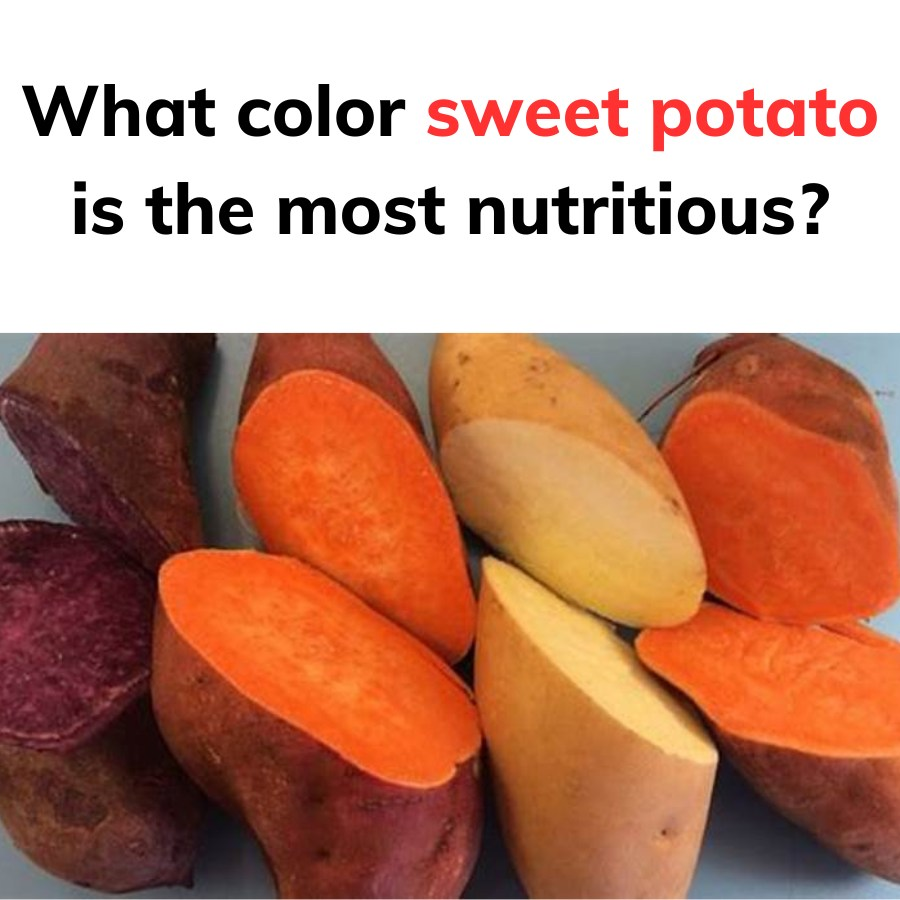Sweet potatoes aren’t just a delicious addition to your plate—they’re a powerhouse of essential nutrients that support overall health and well-being. Whether you love them roasted, baked, or boiled, this versatile root vegetable offers an array of benefits, from fueling your body with sustained energy to boosting your immune system. In this article, we’ll dive into why sweet potatoes are considered a superfood, explore the nutritional differences between their vibrant varieties, and share the best ways to store them for freshness and flavor.
Why Sweet Potatoes Are a Nutritional Powerhouse

Sweet potatoes are packed with complex carbohydrates, providing long-lasting energy without causing spikes in blood sugar. A medium-sized cooked sweet potato, according to the USDA, contains:
- 103 calories
- 23.6 grams of carbohydrates (about 8% of your daily requirement)
- 0 fat or cholesterol
But the benefits go beyond energy. Sweet potatoes are rich in fiber, which promotes digestive health by supporting regular bowel movements and feeding beneficial gut bacteria. They’re also loaded with vital nutrients, such as:
- Vitamins: A, B6, and C
- Minerals: Potassium, manganese, magnesium, and copper
Magnesium for Mental Health
Sweet potatoes contain approximately 30.8 milligrams of magnesium, a mineral crucial for nerve function, muscle relaxation, and even anxiety management. Studies have shown that magnesium plays a vital role in preventing neurological disorders, making sweet potatoes a great addition to a stress-relief diet.
Clearly, these vibrant root vegetables are more than just a comfort food—they’re a nutrient-packed addition to any meal plan.
The Nutritional Differences Between Sweet Potato Colors
Not all sweet potatoes are created equal. Their taste, texture, and nutritional profile vary depending on their color. Let’s break it down:
Orange-Fleshed Sweet Potatoes
- Taste and Texture: Sweet, moist, and slightly firm, perfect for mashing or baking.
- Nutritional Highlight: High in carotenoids, which give them their bright orange hue.
- Health Benefits: Rich in beta-carotene, a precursor to vitamin A. Just one orange sweet potato provides over 730% of your daily vitamin A needs, supporting eye health, immunity, and skin health.
Purple Sweet Potatoes
- Origin: Native to Okinawa, Japan, these potatoes are known for their creamy texture and subtle sweetness.
- Nutritional Highlight: Packed with anthocyanins, the antioxidants responsible for their deep purple color.
- Health Benefits: Anthocyanins have powerful anti-inflammatory, anti-cancer, and cardiovascular-supporting properties. They also help combat obesity and diabetes.
White-Fleshed Sweet Potatoes
- Taste and Texture: Drier and less sweet compared to their orange or purple counterparts.
- Nutritional Highlight: Lower in antioxidants but still rich in essential nutrients.
- Health Benefits: While not as nutrient-dense as the other varieties, white sweet potatoes still provide fiber, vitamins, and minerals, making them a wholesome energy source.
Each color offers unique benefits, so mixing them into your diet ensures you enjoy a range of nutrients.
The Importance of Antioxidants in Sweet Potatoes
One of the standout qualities of sweet potatoes is their high antioxidant content, which helps fight free radicals, reduce inflammation, and protect against chronic diseases.
Carotenoids in Orange Sweet Potatoes
Carotenoids like beta-carotene, lutein, and zeaxanthin are abundant in orange sweet potatoes. These compounds strengthen the immune system, enhance vision, and improve skin health.
Anthocyanins in Purple Sweet Potatoes
Anthocyanins, the pigments found in purple sweet potatoes, are powerful antioxidants with wide-ranging health benefits. They’re known to reduce inflammation, protect against certain cancers, and support cardiovascular health.
If antioxidants are a priority for you, incorporating purple sweet potatoes into your diet is a smart choice.
How to Store Sweet Potatoes for Maximum Freshness
Storing sweet potatoes correctly helps retain their nutrients and flavor while extending their shelf life. Improper storage can lead to spoilage or reduced nutritional value. Here’s how to do it right:
Avoid Refrigeration
Storing raw sweet potatoes in the fridge can alter their cell structure, leading to a hard core and an unpleasant texture. Instead, keep them in a cool, dark, and dry place.
Tips for Storing Raw Sweet Potatoes
- Keep them away from sunlight and moisture to prevent sprouting.
- Use a cardboard box lined with newspaper to create a breathable storage environment.
- Avoid storing them near heat sources, as high temperatures can accelerate spoilage.
How to Store Cooked Sweet Potatoes
- Boiled Sweet Potatoes: Consume within two days for the best taste and nutritional value.
- Peeled Sweet Potatoes: Store in an airtight container in the refrigerator for up to five days.
- Sliced Sweet Potatoes: Keep in water in the fridge for up to two days, but cooking them immediately is recommended for optimal flavor.
- Fully Cooked Sweet Potatoes: Store in a sealed container in the fridge and consume within five days.
By following these tips, you can enjoy sweet potatoes at their freshest while preserving their nutritional benefits.
The Role of Sweet Potatoes in Eye Health
One of the most notable benefits of sweet potatoes is their ability to support and protect eye health. Both orange and purple varieties are excellent for maintaining good vision.
Vitamin A and Eye Health
Orange sweet potatoes are rich in beta-carotene, which converts to vitamin A in the body. Vitamin A is essential for preventing night blindness, reducing the risk of dry eyes, and maintaining overall eye function.
Anthocyanins for Visual Acuity
The anthocyanins in purple sweet potatoes have been shown to improve visual acuity and protect against age-related eye diseases.
If you’re looking to keep your eyesight sharp, sweet potatoes should be a staple in your diet.
How to Enjoy Sweet Potatoes
Sweet potatoes are as versatile as they are nutritious. Here are a few delicious ways to incorporate them into your meals:
- Roasted: Drizzle with olive oil, sprinkle with spices, and bake for a crispy, caramelized treat.
- Mashed: Add a touch of butter and cinnamon for a comforting side dish.
- Sweet Potato Fries: Slice into thin strips, season, and bake for a healthier alternative to regular fries.
- Sweet Potato Soup: Blend with coconut milk, ginger, and spices for a creamy and warming dish.
With endless preparation options, sweet potatoes can fit into any meal or cuisine.
Conclusion: Sweet Potatoes Are a Nutritional Superfood
Sweet potatoes are more than just a tasty vegetable—they’re a nutrient-packed superfood that supports your overall health. From their high fiber content to their impressive antioxidant levels, sweet potatoes are a valuable addition to any balanced diet. Whether you prefer the sweet orange variety, the rich purple type, or the simple white option, each one offers unique health benefits.
Proper storage ensures that you’ll always have fresh sweet potatoes ready to cook, while their versatility in the kitchen makes them a favorite for both savory and sweet dishes. Plus, their role in improving eye health and combating inflammation is hard to ignore.
So, the next time you’re looking for a delicious and wholesome ingredient, reach for sweet potatoes. They’re proof that healthy eating can also be incredibly satisfying!


